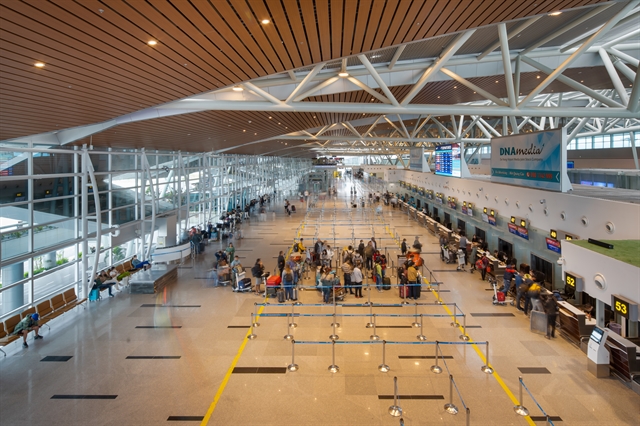 Society
Society

The Ministry of Health (MoH) will amend the guidelines on diagnosis and treatment for dengue patients in a bid to improve the effectiveness of treatment and reduce the mortality rate caused by the disease.

|
| A doctor examines a woman with dengue fever at Quảng Phương communal health station in the central province of Quảng Bình’s Quảng Trạch District. In the first nine months of the year, the province reported 5,300 cases, a five-fold rise from the same period last year. — VNA/VNS Photo Dương Ngọc |
HÀ NỘI — The Ministry of Health (MoH) will amend the guidelines on diagnosis and treatment for dengue patients in a bid to improve the effectiveness of treatment and reduce the mortality rate caused by the disease.
The change was made based on research and experience on treatment of dengue fever in centrally-run hospitals and recommendation by international organisations.
Health facilities were requested to review and adjust the procedures for receiving and classifying cases.
Follow-up examinations should be arranged in a way that is favourable to the patients.
Health facilities were asked to monitor patients who are treated during public holidays and at the weekends to detect and provide treatment to complicated cases and update medical records.
Health facilities need to maintain the operation of the "dengue fever treatment group" and a hotline on dengue fever prevention and combat at medical facilities for regular consultancy and exchange of information as well as offering support.
The facilities were asked to stock enough equipment, medicine and blood for emergencies.
Centrally-run hospitals should classify patients and transfer those with minor complications to local hospitals to avoid overcrowding.
According to Đặng Quang Tấn, deputy director of the Department of Preventive Medicine under the MoH, the number of dengue cases has been decreasing, especially in the provinces which are considered as hotspots such as Đồng Nai, Bình Dương, Đà Nẵng City and HCM City, over the past few weeks. However, he said, localities should not become complacent.

|
Đà Nẵng Hospital overloaded with dengue fever patients. — VNA/VNS Photo Văn Dũng
Dengue fever cases spike
Hà Nội recorded between 200-300 cases of dengue fever per week in August but the number of dengue fever cases increased to 400-500 cases in September.
Heavy rains in the city in early October raised concerns about dengue fever outbreaks, particularly in areas with many construction sites.
Statistics from Hà Nội’s Department of Health showed as many as 6,000 cases of dengue fever had been detected in the city as of October 11, but no fatalities were recorded.
Trần Văn Giang from the National Hospital for Tropical Diseases said the peak time of year for the disease is between August and December.
“Many people may be infected with dengue virus as this is the peak period,” he said.
He advised that anyone experiencing fever, headaches and other symptoms of dengue fever should go to the medical facilities for examination and tests.
“They will be monitored by doctors and receive treatment to limit the serious complications of dengue fever,” Giang said.

|
Medical worker instructs local residents of Quảng Trạch District, Quảng Bình Province in central Việt Nam on how to prevent dengue fever. — VNA/VNS Photo Dương Ngọc
HCM City recorded nine deaths, including two children, caused by dengue fever in the first nine months of this year.
The municipal Centre for Disease Control said in September alone, the city recorded 8,128 cases of dengue fever, and most cases of those who lost their lives were diagnosed and treated late.
The municipal Preventive Medicine Centre advised locals to apply measures to prevent dengue fever and hand-foot-mouth disease, including killing mosquitoes and washing hands regularly.
Cần Thơ Children's Hospital, which receives children from the Mekong Delta provinces, are overloaded with dengue patients.
In the first nine months of this year, more than 2,100 children infected were hospitalised and there are more than 3,000 cases of outpatient treatment, up 2.2 times compared with last year’s figure, according to the hospital.
The central province of Quảng Bình also saw a sharp increase.
In the first nine months of the year, the province reported 5,300 cases, a five-fold rise from the same period last year. — VNS

|
Health workers spray chemicals to kills mosquitoes at students’ dormitory of National Economics University in Hà Nội’s Hai Bà Trưng District. — VNA/VNS Dương Ngọc




